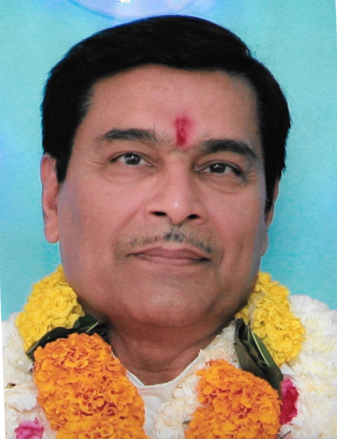From a satsang with Pt. Balram Persad, Spiritual Leader of SWAHA Om Shakti Mandali
Once, in ancient India, when the land was parched and dry, King Janak, upon the advice of his Guru, began to cultivate the land. An object was struck in the earth; it was a singhaasan (throne). On that throne, there was a beautiful baby girl with four divine beings on either side of her. She was resplendent and it was a soul-stirring experience for the king, queen and servants. The child began to cry so Queen Sunaina picked up the child. Together with King Janak, she took the baby home. That child who had emerged from the earth was Divine Sita Devi.
On Sita Navami, in the month of Vaishaakha (April-May) on the ninth day of the bright fortnight, just one month after the birthday of Shree Raam, Sita appeared from Mother Earth. As the daughter of the earth, she is called by various names related to the earth: Bhoomija, Bhoomidevi, Bhoomi, Bhaumi and Bhukanya. Like Sita Devi, we are all children of this earth, and we must reflect on the state of our earthly life. Earth is the source of our existence and our nourishment. It provides all that we need and all that we have. We are born and we die on the earth, and we have a duty towards it. From Mother Earth we learn patience, forbearance and tolerance. It teaches us that despite adversity, we must still give to others. The tree does not stop bearing fruit; the water in the river does not stop flowing; the crops do not stop growing. Mother Earth teaches us that although we have difficult times in life – challenges, disappointments and frustrations – we should not give up our innate goodness and our spirituality. This is exemplified in the life of Mother Sita.
Sita Devi is also called Janaki, meaning “daughter of Janak” and “dear to one’s life”. What is dear to your life? Health, family, money, job, opportunity, property – these are all good, but they are on the materialistic level. The values and virtues that we have, our spiritual growth and sense of duty, love and service – these are what give meaning to life.
Sita also means “the furrow or handle of the plough”, which King Janak used to prepare the land for cultivation. The body is also made of earth. Just as we churn the ocean of consciousness, we need to go inside ourselves and plough the mind and consciousness to uplift ourselves.
Another name of Sita is Ramaa, which means “enchanting”. What is enchanting in our life? Our personality and beauty are most enchanting if we emit positive vibrations and always create positive energies.
She is called Vaidehi, one who is above physical wants and needs. While we require physical necessities to live, we should not become obsessed with clothing, jewellery and fashion. We must rise above our physical needs and wants.
Sita Maa exemplified loyalty, integrity and courage. Although she was kidnapped, she remained steadfast and strong in mind, body, faith and strength of character. In the hostile land of Lanka, she was surrounded by demonic forces that taunted her, but she continued to chant the name of Shree Raam. She did not give up her faith and belief in the Lord. Sita Maa was also a dutiful wife. Shree Raam told her that the forests were filled with many dangers and difficulties. She said, “My Lord, I got married to you to support you and be there for you.” She was a responsible mother. She was sent out of Ayodhya to live in a hermitage as an expectant mother where she raised twin boys, Lav and Kusha, without the luxury and comforts of a palace. As a devotee, even though she was the manifested form of the Goddess of the Universe, she found time to pray. As they began their 14 years of exile, she asked Shree Raam to give her the time to pray for their safe return to Ayodhya.
As we observe Sita Jayanti, let us try to emulate Sita Devi’s many virtues and qualities.



